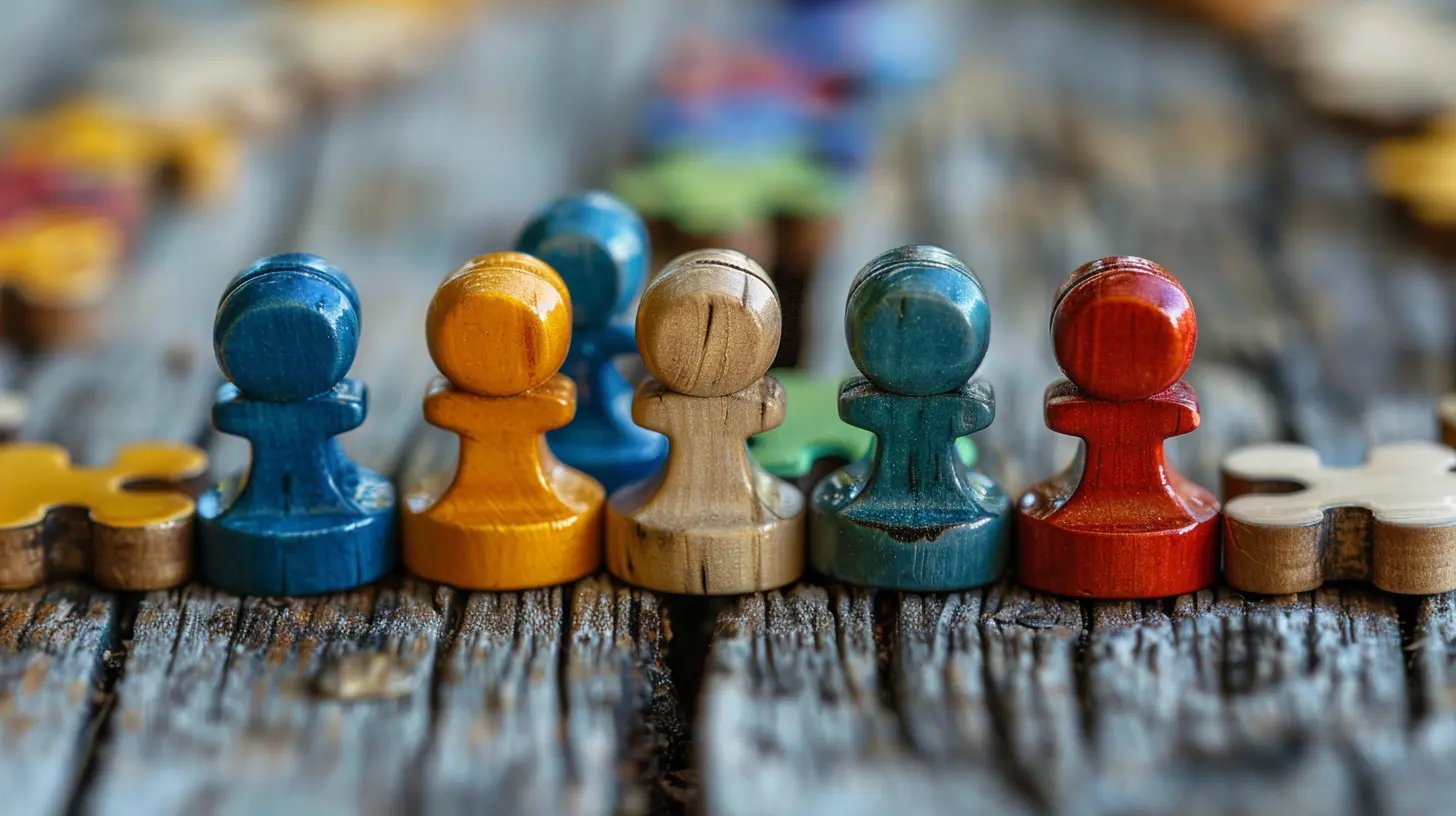Group Work in STEM Education: Building Collaboration in Science and Math
12 August 2025
Imagine a group of students huddled around a lab bench, giggling as they try to figure out why their robot keeps turning in circles. Or picture a classroom buzzing with discussion as small teams race to solve a complex math problem, each voice contributing to the final answer. That’s the magic of group work in STEM education—it’s where science and math come alive, not just as subjects, but as shared adventures.
In today’s fast-evolving world, collaboration isn’t just a soft skill - it’s a superpower. Especially in STEM (Science, Technology, Engineering, and Mathematics), where breakthroughs rarely come from isolated efforts. Whether it’s building bridges or decoding the human genome, progress is a team sport. So, let’s dive into how group work in STEM helps students not only tackle equations and experiments but also learn the art of working together.
Why STEM Needs Teamwork
STEM isn't about memorizing formulas or facts. It’s about solving problems, often messy, complex, and real-world ones. One person can only do so much alone. But put four minds together with different strengths? That’s where the real innovation happens.Think about the Mars rover missions. Engineers, programmers, physicists, designers—all worked as one crew. That’s the essence of STEM: multiple perspectives working in harmony. Students practicing group work are essentially rehearsing for their future roles in this collaborative dance.
It’s Not Just About Tasks—It’s About People
Working in groups teaches students much more than how to split up a project. It sharpens:- Communication: Can they explain their thinking clearly?
- Conflict resolution: How do they deal with disagreement?
- Leadership and accountability: Can they take charge without taking over?
All these are critical in the STEM workforce. And trust me, hiring managers aren’t just looking at your GPA—they’re asking, “Can this person work well with others?”
The Classroom as a Collaborative Lab
Let’s be real—group work can get messy. Someone talks too much. Another zones out. One person ends up doing most of the work. But when done right, the classroom transforms into a miniature version of the real STEM world.Building Mini STEM Teams
Effective group work doesn’t just happen. Teachers have to set the stage:- Clear roles: Assign a researcher, a note-taker, a presenter—everyone matters.
- Defined goals: Make sure the whole group knows the mission.
- Balanced groups: Mix different skill levels and personalities.
This isn't just herding cats—it's curating chemistry. With the right mix, even students who shy away from science or math can find their spark.
From Silent Desks to Interactive Hubs
The days of sitting in rows in dead silence? They're fading fast. Today's STEM classrooms vibrate with energy. Here's a peek into what they can look like:- Lab partners building sustainable energy models
- Teams coding a mobile app to solve local problems
- Groups creating math gameboards to explain algebra concepts
In each case, it’s not just about the “what” they're doing, but the “how” they’re building it—together.
Benefits That Go Far Beyond the Curriculum
Here’s the thing—group work in STEM teaches kids more than just science and math. It flips the focus from competition to collaboration. And that shift? It's powerful.Boosts Confidence
Ever noticed how students light up when their idea helps the whole group? Being part of a team validates their voice, especially for those who might feel invisible in traditional settings.Fosters Critical Thinking
When students work together, they question each other’s logic. They debate solutions. They test theories. It’s like a mental gym where every rep builds stronger thinking muscles.Prepares Them for the Real World
Let’s not sugarcoat it—real work is teamwork. Whether you're a software engineer debugging code or a biologist tracking a virus, you’re not doing it solo. Group work in school is practice for life.Encourages Diversity of Thought
STEM is stronger when every student’s voice is heard—across genders, races, and backgrounds. Group work brings that melting pot to life. It allows students to learn from people who don’t think like them. That’s the heartbeat of innovation.
Strategies to Make Group Work Work
Okay, so we know group work matters. But how do we actually make it effective? Because let’s face it—without structure, it can feel more like chaos than collaboration.1. Set the Culture
It starts with trust. Students need to feel safe to share wild ideas, make mistakes, and disagree respectfully. Teachers can model this by encouraging curiosity over correctness. It's not about having the right answer—it's about asking the right questions.2. Use Real-World Challenges
Nothing gets students more engaged than solving something that feels real. Want to teach geometry? Have them design a roller coaster. Worried about water use? Let them build a working irrigation model. When the problem feels meaningful, teamwork feels natural.3. Reflect and Review
After the group project, give students time to reflect. What worked well? What didn’t? What would they do differently? This turns every group experience into a learning loop.4. Celebrate All Contributions
Not everyone’s a loud leader. Some are quiet thinkers, detail-checkers, or idea-generators. Group work should honor all these roles. Shining a light on different strengths teaches students that collaboration is like an orchestra—each instrument adds something vital.The Role of Technology in Group Collaboration
Technology isn’t just a tool—it’s a bridge. Especially after the digital shift from the pandemic, tech makes it easier (and more fun) for students to work together.Digital Tools That Fuel Connection
Some student favorites include:- Google Workspace for shared docs and spreadsheets
- Jamboard and Padlet for brainstorming
- Slack or Discord for team communication
- Tinkercad for collaborative 3D design
These tools flatten the hierarchy and allow students to contribute equally—whether they're in the classroom or logging in from the library.
Virtual Labs and Simulations
Hands-on science can sometimes be limited by budget or time. Enter virtual labs, where students can simulate chemical reactions, manipulate DNA, or explore outer space—all from a tablet. Many of these platforms also have multiplayer or group modes, making collaboration easier than ever.When Group Work Fails—and What to Do
Let’s be honest—group work isn’t always rainbows and robots. Sometimes it's frustration, imbalance, or just plain miscommunication. But that doesn’t mean we throw it out.Common Roadblocks:
- One person doing all the work- Communication breakdowns
- Personality clashes
- Lack of motivation
Solutions:
- Use peer evaluations so students keep each other accountable.- Set milestones so groups can track progress.
- Incorporate check-ins where the teacher mediates and supports.
- Allow for group reshuffling when chemistry just isn’t there.
Remember—it’s not failure. It’s feedback.
Stories from the Field: Real Students, Real Impact
Anna, a 10th-grader who used to hate math, found her confidence by leading a math game design in her group. She wasn’t the best with numbers but had a knack for storytelling—turns out, her creativity turned the game into a class favorite.Then there’s Marcus, a quiet eighth-grader who finally spoke up during a STEM fair group project. His idea for an eco-friendly water filter won second place—and more importantly, gave him a voice he didn’t know he had.
Group work changed their story. And it can change many more.
The Bigger Picture: Shaping Better Thinkers (and Humans)
Let’s pull back for a moment. Why does this all matter?Because the future depends on how well we solve problems together. Climate change, pandemics, space exploration, AI ethics—we need teams of brilliant minds working as one. And where does that begin? In a classroom where students learn to listen, share, argue, build, and grow as one.
Group work isn’t fluff. It’s the foundation.
Final Thoughts: From Me to You
If you’re an educator, don’t shy away from the messy beauty of group work. If you’re a student, lean into the discomfort—there’s gold in the collaboration. And if you’re a parent, encourage your child to embrace team challenges, even when they seem tough.STEM isn’t just about science and math. It’s about people working together to make the world better. Group work? It’s how we begin.
all images in this post were generated using AI tools
Category:
Group WorkAuthor:

Fiona McFarlin
Discussion
rate this article
1 comments
Bridget Rhodes
Group work in STEM fosters essential collaboration skills, enhancing problem-solving and creativity in students’ learning.
August 19, 2025 at 12:57 PM

Fiona McFarlin
Thank you for your insightful comment! I completely agree—group work in STEM not only cultivates collaboration but also sparks creativity and enhances problem-solving skills, all of which are vital for student success.


